| 1Q |
|
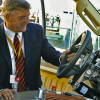

Driverless Ford F-350 |
Dr. John Burrow gets behind the wheel of a driverless
Ford F-350 truck with software integrated by the Applied
Manufacturing Technology Department at NAWCWD China
Lake, 05 January 2015. The department helps modify the
trucks to pull targets during weapons testing. Official
U.S. Navy photo.
|

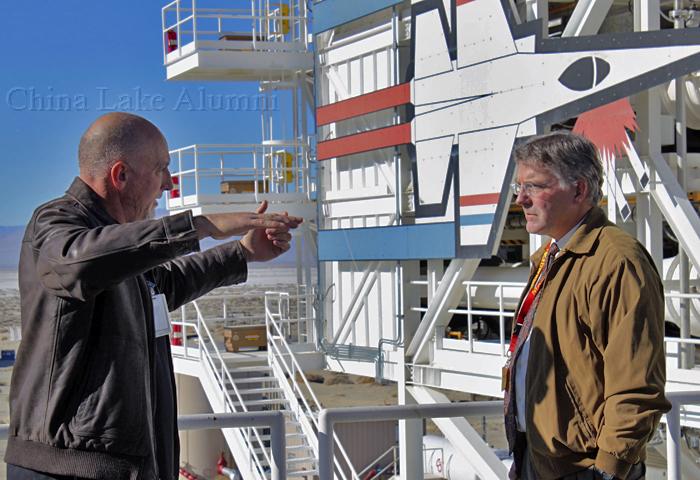
High-Velocity Airflow System |
Jay Kovar, left, explains the types of tests run
through a High-Velocity Airflow System at NAWCWD China
Lake to Dr. John Burrow. Behind them, nine silos can
fire off enough rocket power to simulate realistic flight
speeds without having to spend extra funds on live-fire
or wind tunnel testing. China Lake, 07 January 2015.
Official U.S. Navy photo.
|

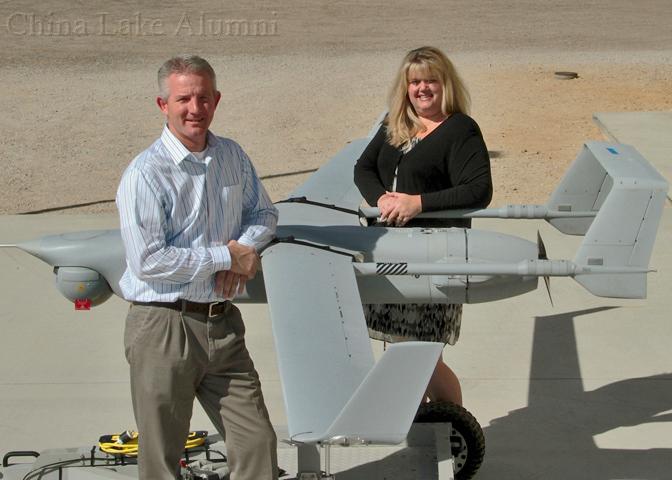
RQ-21A Integrator |
James Bell and Deidre Patin stand next to an unmanned
aerial vehicle RQ-21A Integrator at NAWCWD China Lake,
CA. A presidential executive order led to the two participating
in preliminary discussions with South African officials
about new approaches to prevent illegal wildlife trafficking.
08 January 2015. Official U.S. Navy photo.
|

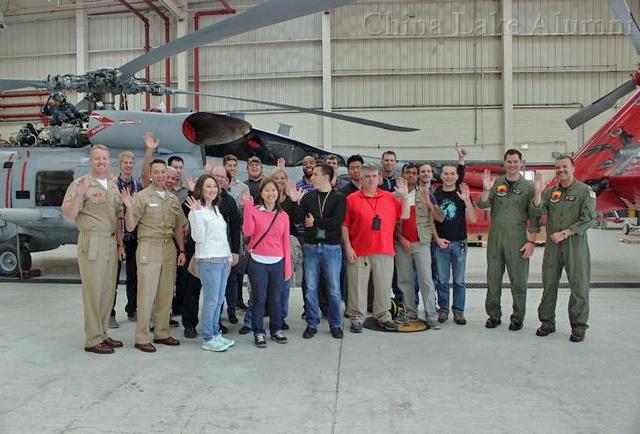
DoD civilians |
HSM-49 Scorpions CAG bird MH-60R Seahawk BuNo 168101,
TX-100, provides the backdrop for Cdr. Brian Sinclair,
left, and a group of more than 20 DoD civilians who
represented departments across NAWCWD China Lake and
Point Mugu during a visit with HSM-49. NAS North Island,
28 January 2015. Official U.S. Navy photo by Theresa
Goldstrand.
|
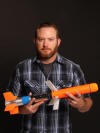

ALT |
Jonathon Pooley, a technician at NAWCWD China Lake,
displays a 25-inch, 5.5-pound forward-firing miniature
munition known as Spike. 03 February 2015. Official
U.S. Navy photo.
|

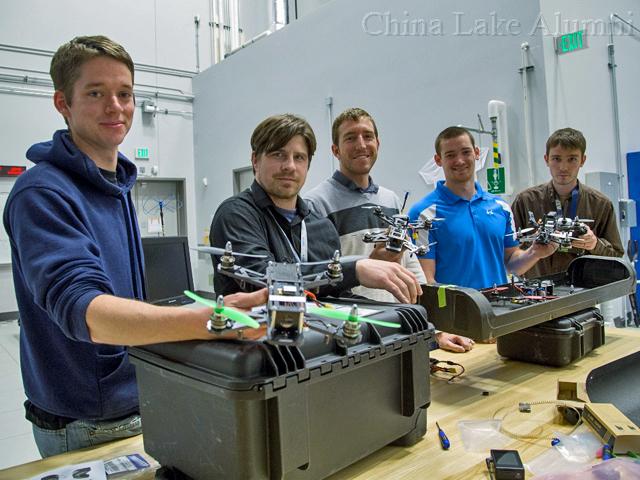
Innovation Challenge winners |
China Lake Innovation Challenge winners propose
developing an expendable aerial vehicle, similar to
the ones they are holding, that could increase
battlefield intelligence. Team members are, from
left, Scott Slaughter, Derek Hamel, Chase York,
Vincent Schuetz and team mentor Jonathon Duncan.
Team leader Nicholas Albrecht and Pavel Rybakov were
traveling on temporary duty. China Lake, 04 February
2015. Official U.S. Navy photo.
|

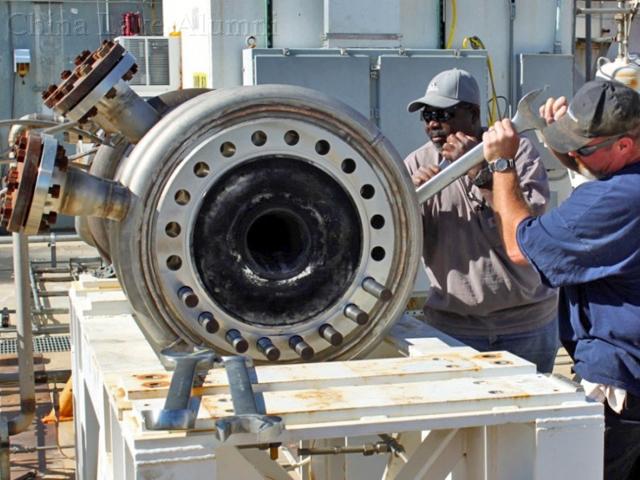
NAWCWD T-Range |
Engineering technicians Eugene Woods, left, and Chad
Carrasco tighten bolts on a high-temperature burner
at the T-Range at NAWCWD China Lake, CA 25 February
2015. These burners are capable of replicating Mach
4 conditions at sea level and help test missile subcomponents,
solid fuel ramjet engines, liquid rocket engines and
full-scale tactical missile rocket to air-breathing
engine transition testing. Official U.S. Navy photo.
|

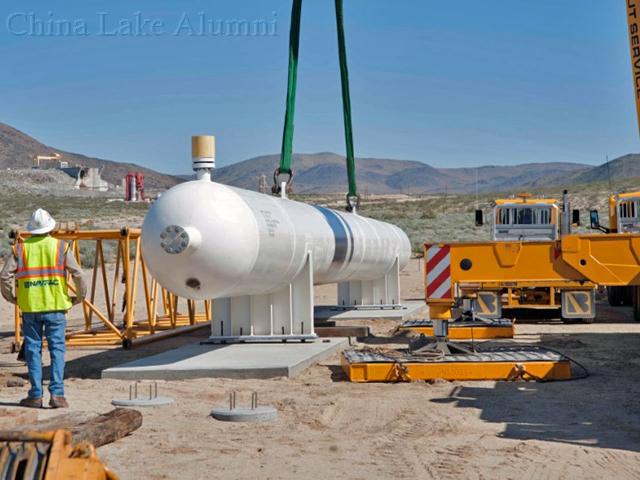
High-pressure air vessel |
Construction workers watch as a crane lowers a new
1,000 cubic foot high-pressure air vessel into place
March 15, 2015 at the air-breathing propulsion test
facility, or T-Range, NAWCWD China Lake. Official U.S.
Navy photo.
|
| 2Q |
|

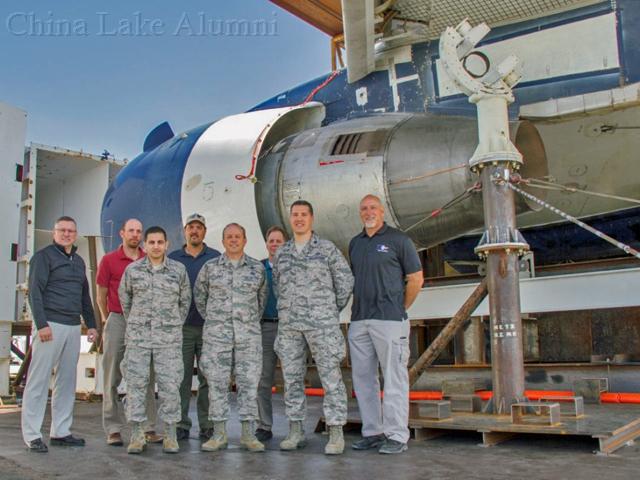
KC-46 Pegasus |
USAF Col. Chris Coombs of the KC-46 Pegasus Program
Office, center, convenes with other program officials
April 7, 2012 to inspect the test article in preparation
for the weapons survivability test at NAWCWD Weapons
Survivability Laboratory, China Lake, CA. Behind them,
a live warhead detonated inside the KC-46’s left pylon
after passing through the metal ring, which triggered
the warhead’s detonator. From left to right are: Jeff
Wuich, KC-46 Program Office, Scott Wacker, KC-46 Program
Office, 1st Lt. Kerollos Marzouk, KC-46 Program Office,
Ron Schiller, head, WSL Engineering Section, Coombs,
Bill Franklin, KC-46 Program Office, Lt. Col. Pete Sandness,
KC-46 Program Office and Jay Kovar, branch head, WSL.
Official U.S. Navy photo.
|

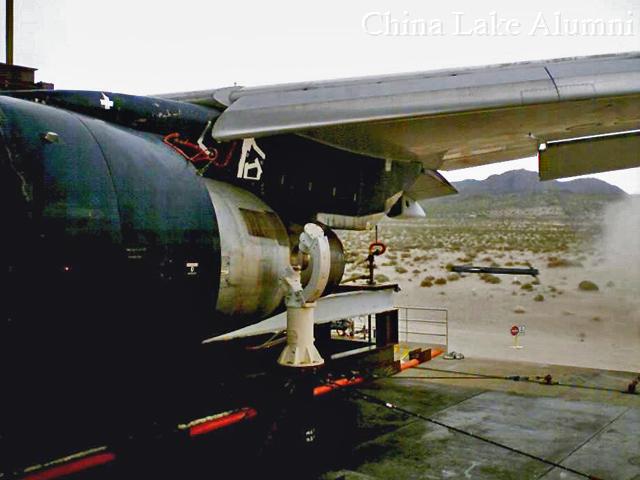
KC-46 Pegasus |
At 100,000 frames per second, this high-speed still
captures the Live Fire Test and Evaluation (LFT&E)
missile en route to the KC-46 Pegasus tanker at the
NAWCWD’s Weapons Survivability Laboratory on April 7,
2015. The LFT&E missile is the first of its kind.
The KC-46 program office requested the warhead be custom-designed
by the Weapons Division to evaluate the highest threat
scenario possible. Official U.S. Navy photo.
|

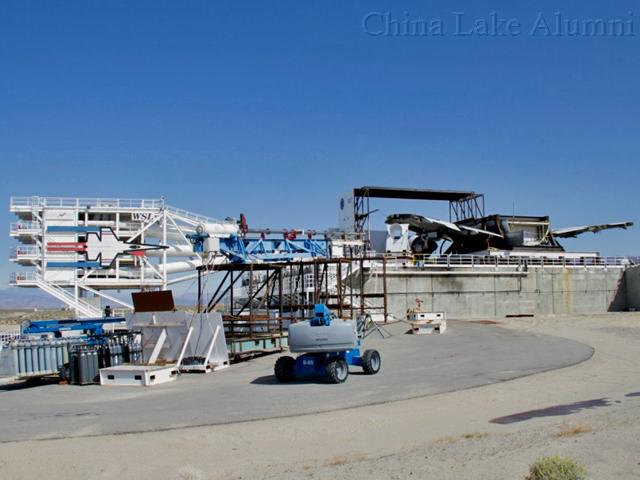
KC-46A Pegasus test |
Overview of the KC-46A Pegasus test at the Weapons
Survivability Lab, China Lake, CA, 15 April 2015. On
the left, the large, white High-Velocity Airflow System
fired its nine jet engines to simulate realistic flying
conditions for the mock KC-46 refueling tanker, seen
on the far right. The cannon, pictured in the center,
fired a live warhead into a critical position, the aircraft’s
left pylon. Official U.S. Navy photo.
|

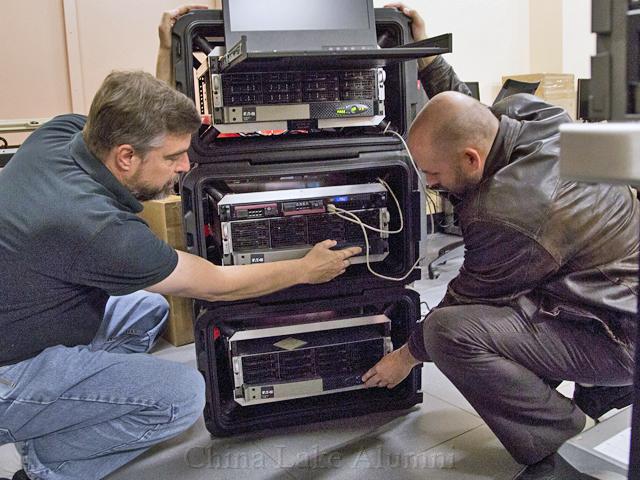
Portable Geospatial Product Library |
Electronics technician, Erik van Bronkhorst, left,
and mathematician Spencer Hall run power diagnostics
on a Portable Geospatial Product Library (PGPL) April
15, 2015 at NAWCWD China Lake, CA. In a turnaround period
of two months, the two conceived, designed, procured
and constructed the first PGPL prototype as a cost-effective
solution for targeteers aboard U.S. Navy aircraft carriers.
Photo by Leroy Doig, III.
|

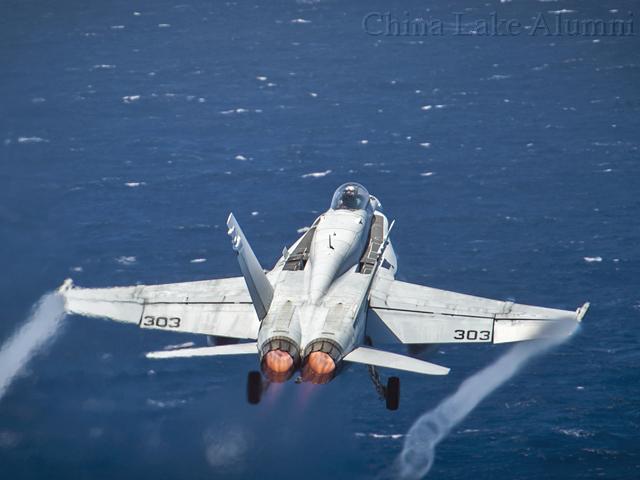
F/A-18C Hornet BuNo 165225 |
VX-9 Vampires F/A-18C Hornet BuNo 165225, XE-303,
is launched from the flight deck of the aircraft carrier
USS Ronald Reagan (CVN 76), 29 April 2015. Official
U.S. Navy photo by Mass Communication Specialist 3rd
Class Chase C. Lacombe.
|

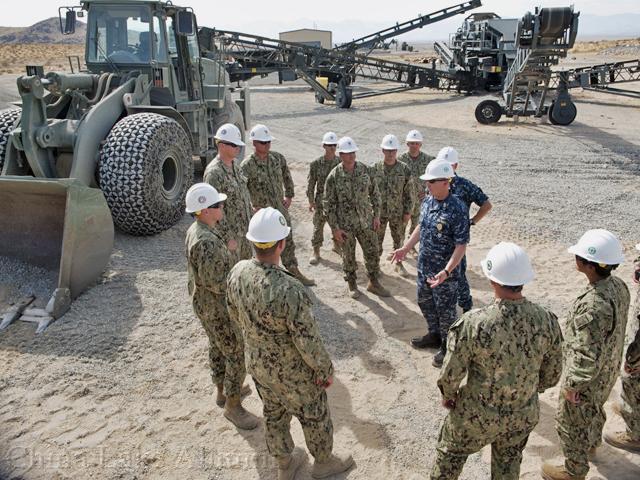
Seabees |
MCPON Mike Stevens speaks with Seabees during his
visit to NAWS China Lake, CA, 28 August 2015. This
visit marks Stevens’ first time in China Lake, and
is part of a two-week visit to various commands in
the Navy’s Southwest Region. Photo by MC1 Martin L.
Carey.
|

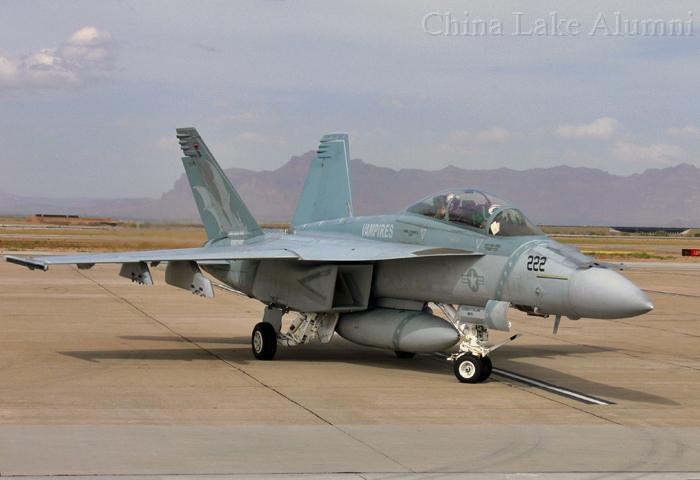
F/A-18F Super Hornet BuNo 166980 |
VX-9 Vampires F/A-18F Super Hornet BuNo 166980, XE-222,
Williams-Gateway airport, 14 May 2015. Photo by Jack
McGorray.
|

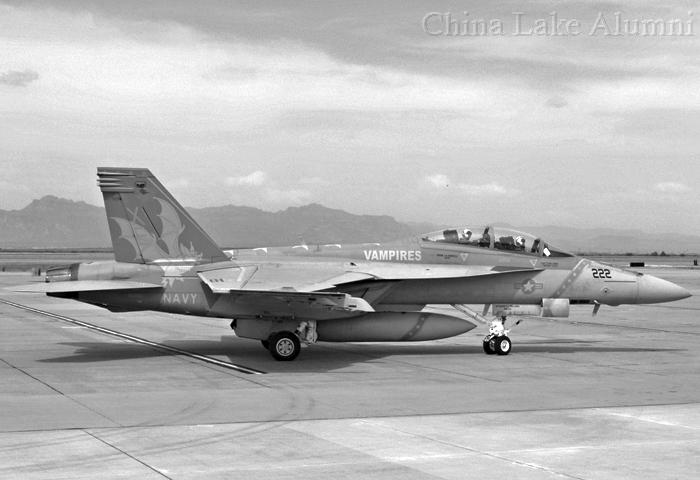
F/A-18F Super Hornet BuNo 166980 |
VX-9 Vampires F/A-18F Super Hornet BuNo 166980,
XE-222, Williams-Gateway airport, 14 May 2015. Photo
by Jack McGorray.
|

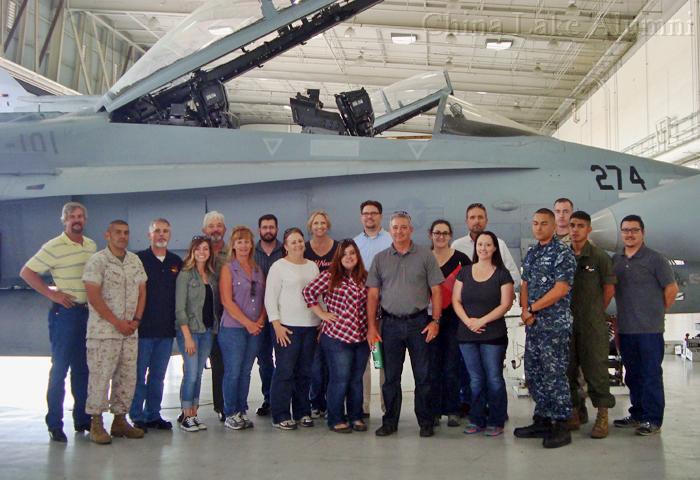
NAWCWD China Lake employees |
NAWCWD China Lake employees take a group photo in
front of a VMFAT-101 Sharpshooters F/A-18D Hornet
BuNo 164272, SH-274, at Marine Air Logistics
Squadron 11 (MALS-11,) 09 June 2015. Official U.S.
Navy photo.
|
| 3Q |
|

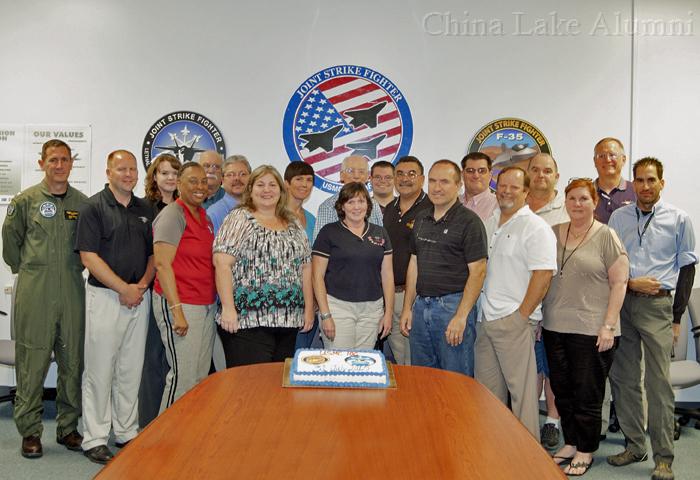
Lightning project team members |
Capt. Dana Dewey, left, joins NAWCWD F-35 Lightning
project team members at China Lake August 5, 2015 before
an informal meeting where they shared their experiences
and stories with the F-35 director of program control.
Official U.S. Navy photo.
|
| 4Q |
|

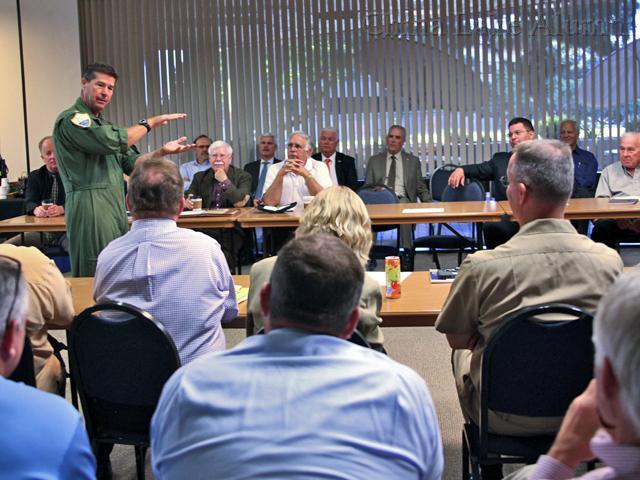
Regional Defense Partnership |
RAdm. Mike Moran, NAWCWD China Lake commander,
addresses about 50 members of the Regional Defense
Partnership for the 21st Century at its monthly
meeting at the Hall of Justice in Ventura, CA, 07
October 2015. Official U.S. Navy photo.
|

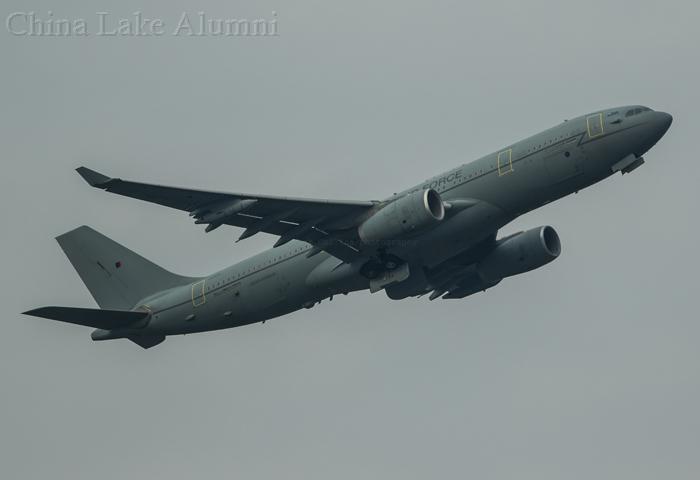
KC2 Voyager s/n ZZ330 |
Royal Air Force Airbus KC2 Voyager (A330-243MRTT)
Air Tanker s/n ZZ330 departing RAF Brize Norton as Ascot
9270 dragging three GR4 Tornados (Callsigns APOLLO)
to Wright Patterson after an overnight stay in Gander,
Nfld and then to NAWCWD China Lake, 11 October 2015.
|

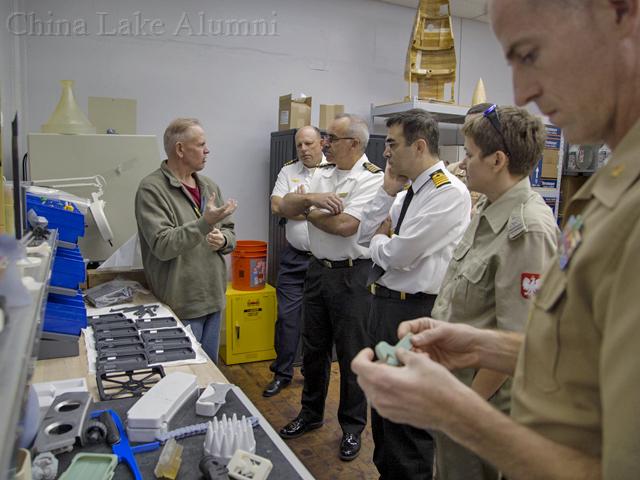
Additive technology |
Applied Manufacturing Technology Division Head Ken
Hayes explains the current and potential use of NAWCWD
China Lake’s additive technology (3-D printing) capability
to naval attachés on October 27, 2015. Official U.S.
Navy photo.
|

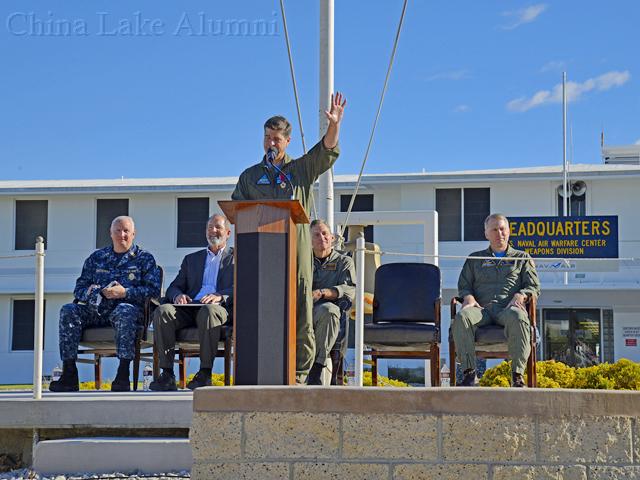
RAdm. Mike Moran |
RAdm. Mike Moran gives his thanks to the NAWCWD China
Lake workforce as he makes a final address as commander
on October 29, 2015. Moran will report to Patuxent River,
MD and assume duties as the program executive officer
for Tactical Aircraft Programs. Official U.S. Navy photo
by Mark Pahuta.
|

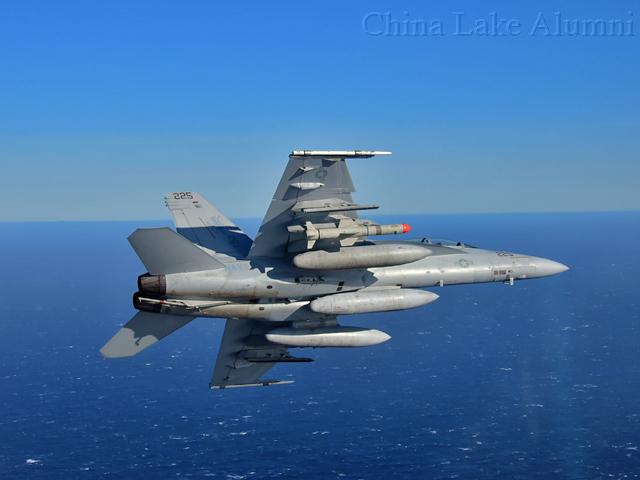
F/A-18F Super Hornet BuNo 166968 |
VX-31 Vampires F/A-18F Super Hornet BuNo 166968,
DD-225, carries the new Harpoon Block II+ missile during
a free flight test November 18, 2015 at Point Mugu's
Sea Range. The Navy plans to deliver the Block II+ variant
to the fleet in 2017. Official U.S. Navy photo.
|

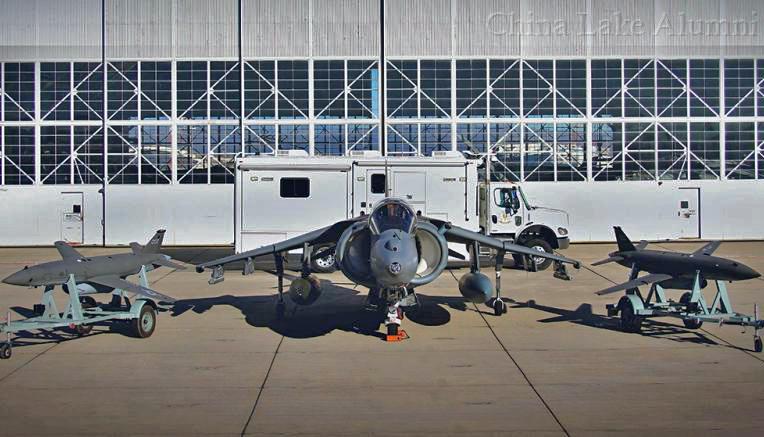
UTAP-22 Gremlins |
A Navy AV-8B Harrier demonstrated its ability to
control a UTAP-22 Gremlins “wolf pack” over a series
of test flights at the China Lake test range,
November 23, 2015. The high-performance combat
drones will serve as “loyal wingmen” for manned
fighters and bombers, cooperatively supporting
missions fully or semi autonomously.
|
|
|